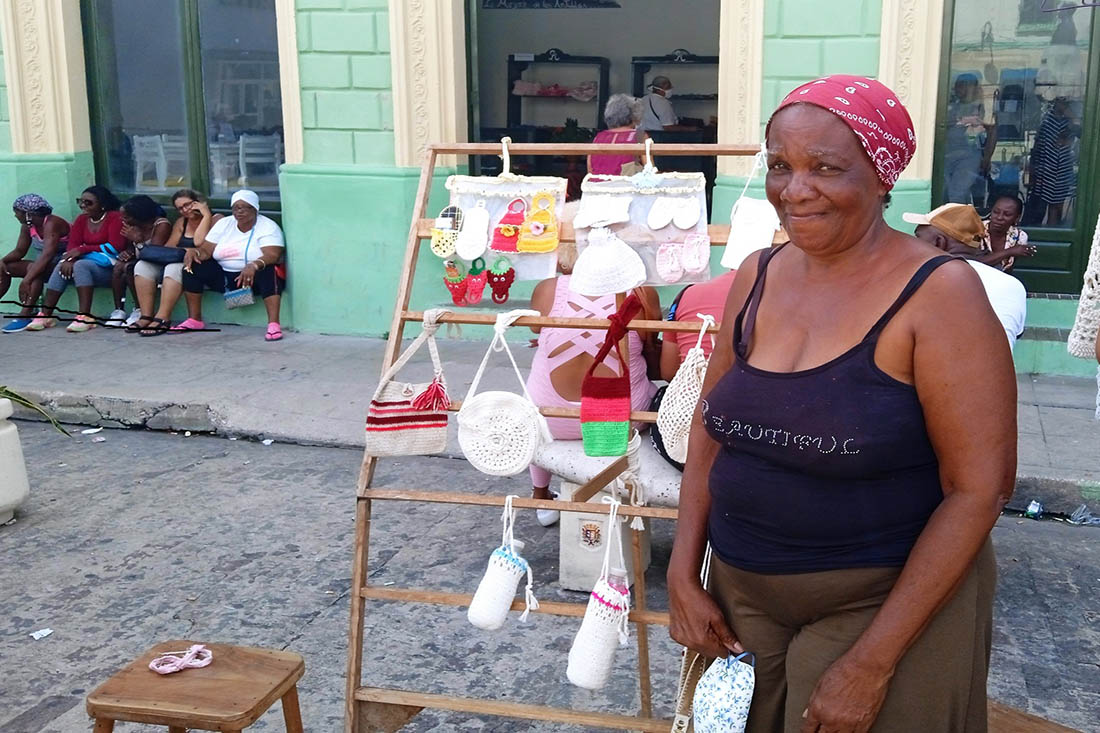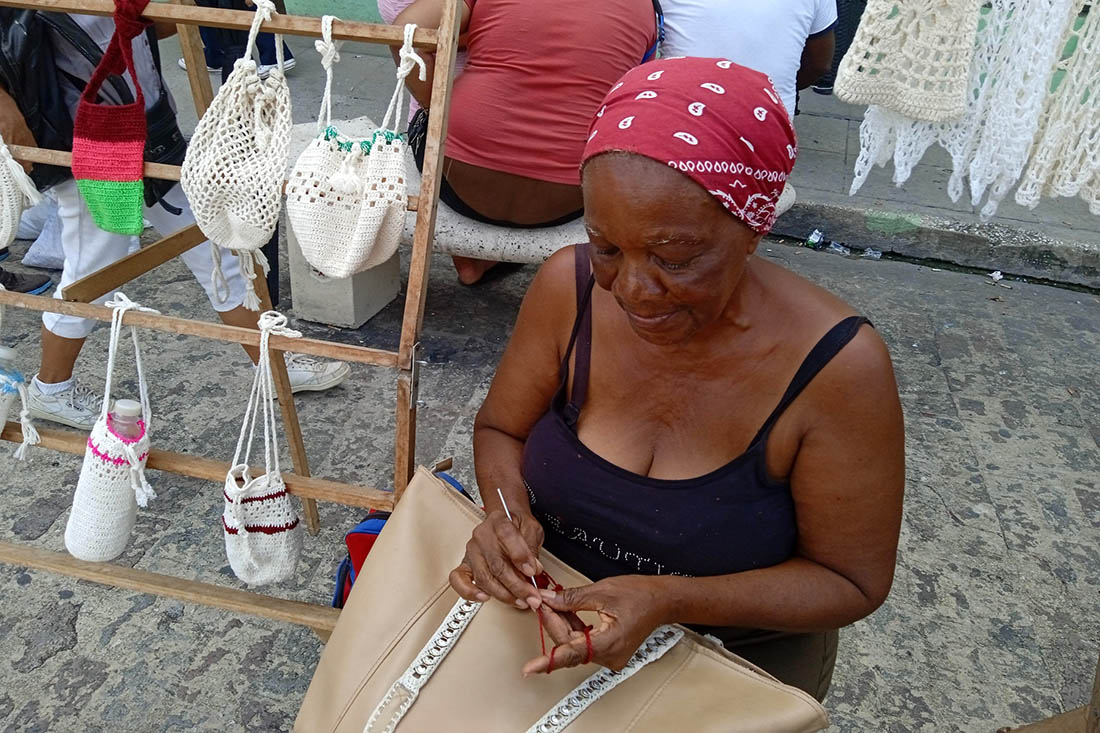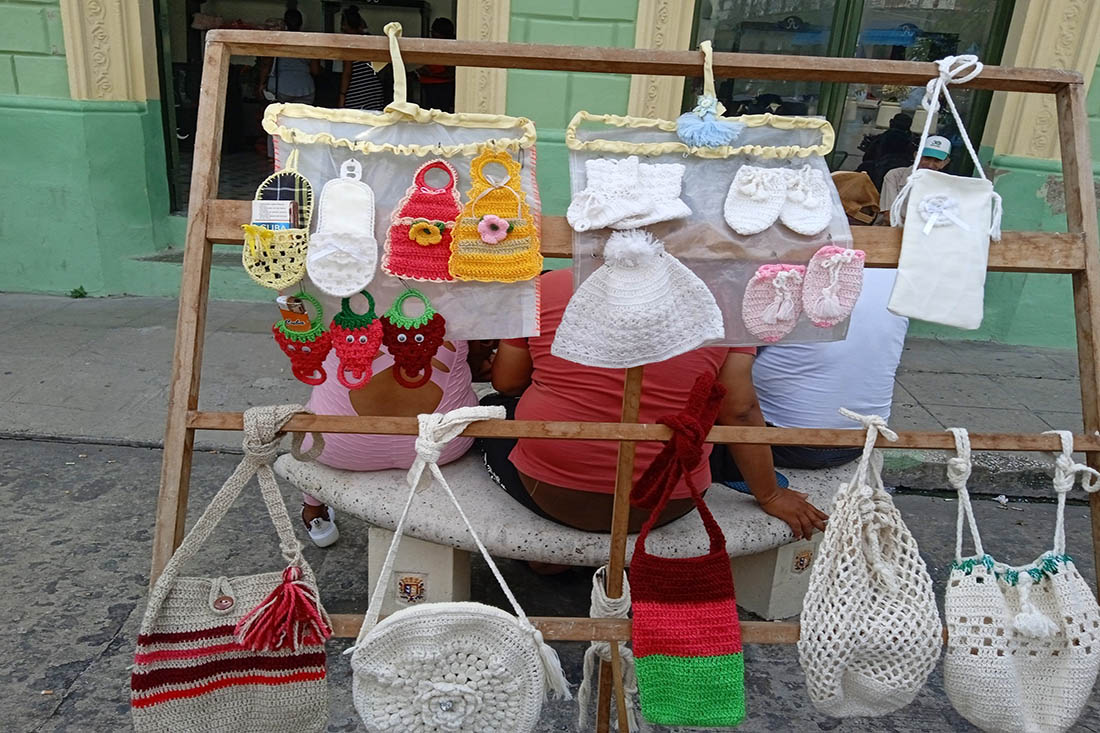Seeing her with her knitting needles and making a crochet knitted I couldn’t stop thinking about my grandmothers. From my childhood I remember them knitting little socks and hats for the children of the family and friends who were about to be born. For my dolls there were always some clothes, in case they were cold. That morning, being able to enjoy this art live, before everyone’s curious eyes, I couldn’t resist and got to take a closer look.
This is how I found the artisan Mirtha Hernández Barreto. The project that brings together creators of different specialties from the entire Camagüey province, called Carmen Durán, was in Maceo Square -as they usually do on weekends. Mirtha was so engrossed counting her stitches that she didn’t even notice my presence.
Notes of a craft
The fabric is, in addition to delicacy, a constant source of income, which is why it represents a help for the domestic economy.
In colonial times, it was a secondary activity supported by women in homes. Currently, it is the main occupation of many weavers who produce various pieces to beautify the home, used as clothing, or accessories for babies’ trousseau (layettes); and others with utilitarian value for the work environment, bags for cell phones -among many other variants.
The styles of fabrics and also the materials are diverse. Fibers and threads can be the basis of these creations. But I am going to refer to those that are born from cotton thread, with crochet techniques; that take hold at the end of the 19th century, and minardí, tatting, macramé, two needles, among others.
Mirtha, the weaver
The weaver we are approaching today, Mirtha, has found her favorite technique in crochet; and her specialty, like that of my grandmothers, is making little socks.
For her, crafts are a therapy; she is taken to the fantasy world and she stops thinking about her problems. “It’s something like a sedative”, she tells me in a low voice, because she’s shy and it’s hard for her to talk.
Mirtha learned from her mother and from her grandmother, as has happened in many families that share the tradition of weaving and embroidery. Upon retiring from the work she carried out for more than three decades at the Dairy Products Company, she enrolled in a course to “refresh” her skills; and it was in the year 2010 when she returned to her webs as a little spider.
She is a member of the community project created by artists from the Casa de la Cultura Ignacio Agramonte; and thanks to this initiative, she shares space and knowledge with other weavers, enterprising women who with the turns of their needles push the home and city economy.
Although her partner in her specialty creates vests and dresses -better-paid pieces- Mirtha prefers the layette and also knits some curious little bags.
I really appreciate those wonders that come from the thread, but I never even learned the first lesson -not even to make the simplest stitch that a beginner must master, the chain- because I have very little patience.
As I passed through that square full of beauties and traditions, I must confess that for a few moments I forgot where I was going, I forgot the daily rush; and I delighted in the threads of memory: those that continue to guide the needles of Mirtha Hernández Barreto so that her legacy endures.
Translated by: Aileen Álvarez García








